Technology Report

Executive Summary
- Bain’s 2022 survey of industrial IoT decision makers finds more companies piloting the technology, cutting costs, and increasing revenue, but struggling to scale.
- Scaling these pilots and getting the industrial IoT to the next level of automation and intelligence requires addressing problems that hardware vendors and manufacturers are well positioned to solve.
This article is part of Bain's 2022 Technology Report.
If you’re looking for good news on the industrial Internet of Things (IoT), there’s plenty. Our 2022 survey of 500 IoT decision makers in Europe and the US found that the number of organizations implementing proofs of concept grew nearly 20% from 2018 to 2022 and is expected to grow another 20% by 2026. Nearly all report that their deployments are going as well as or better than expected, with cost reductions and revenue increases of 30% to 40%.
Yet despite these good results, IoT hasn’t enjoyed rapid, widespread adoption. Why?
It’s mainly because of a struggle to scale beyond initial proofs of concept; 80% of buyers scale fewer than 60% of their pilot projects. The top reasons include the complexity of integration, vendors that are unable to support scaling, and inadequate life cycle support of the IoT solution (see Figure 1). In a proof of concept, such challenges can be solved by throwing engineering resources and programmers at the project, but that’s not sustainable once a company is ready to scale something to the broader organization.
Four-fifths of companies are scaling fewer than 60% of proofs of concept, and integration is a bigger obstacle than pilot failure
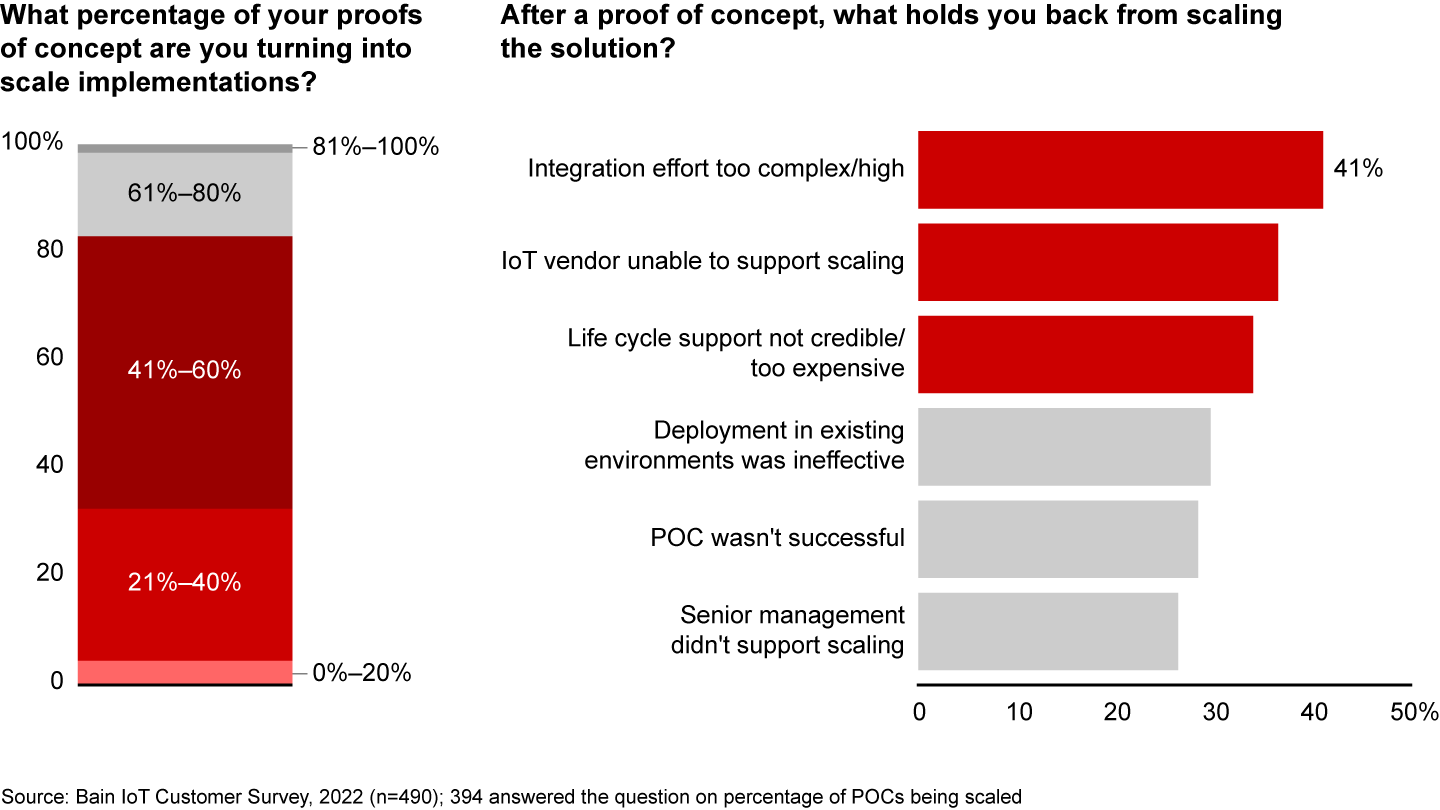
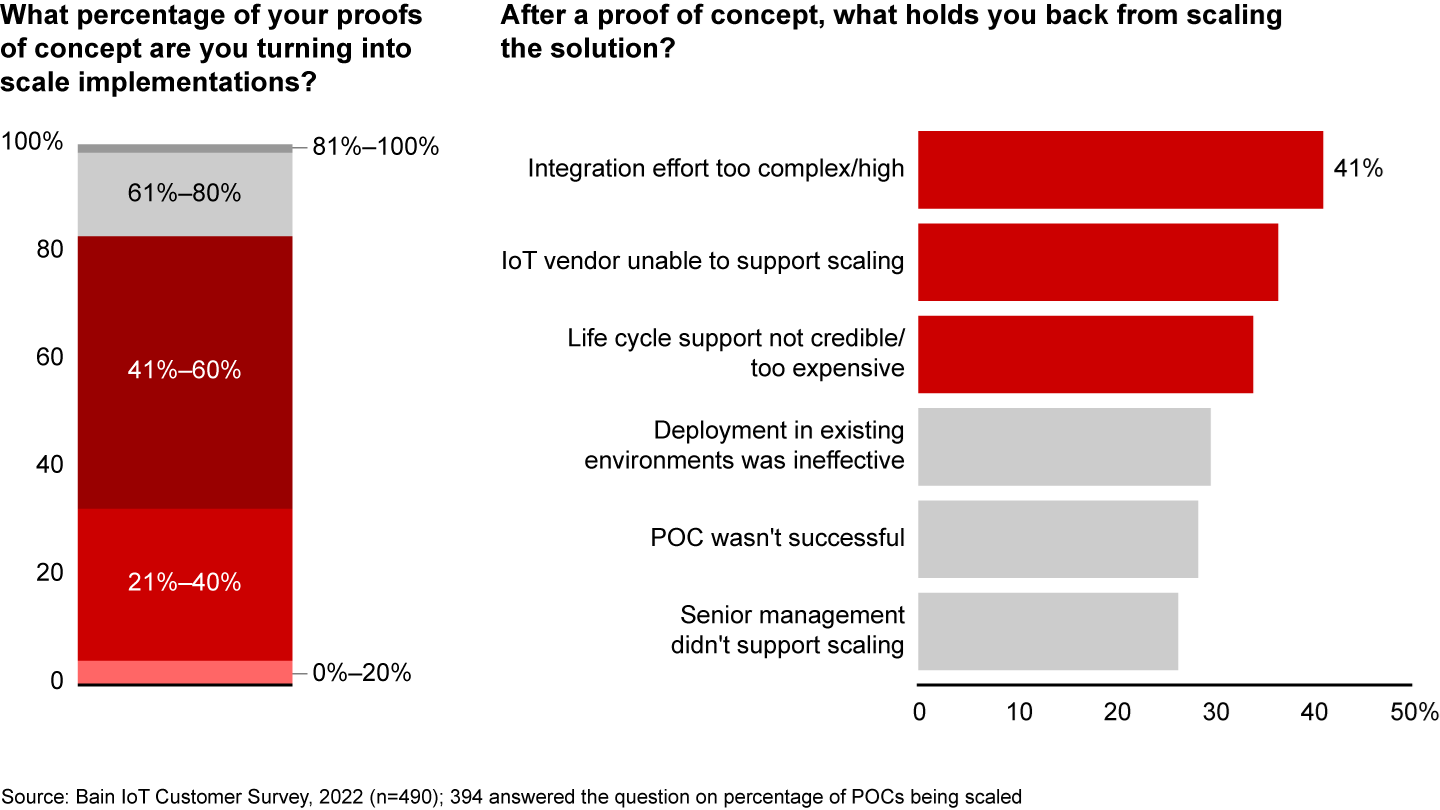
One thing that’s not standing in the way is security. Regulators have pushed for―and IoT specialists, security providers, and device manufacturers have developed―important security solutions. So, while security remains a concern broadly, in IoT it no longer causes as much angst it once did (see Figure 2).
Barriers to IoT adoption still exist, but buyers are increasingly focused on implementation
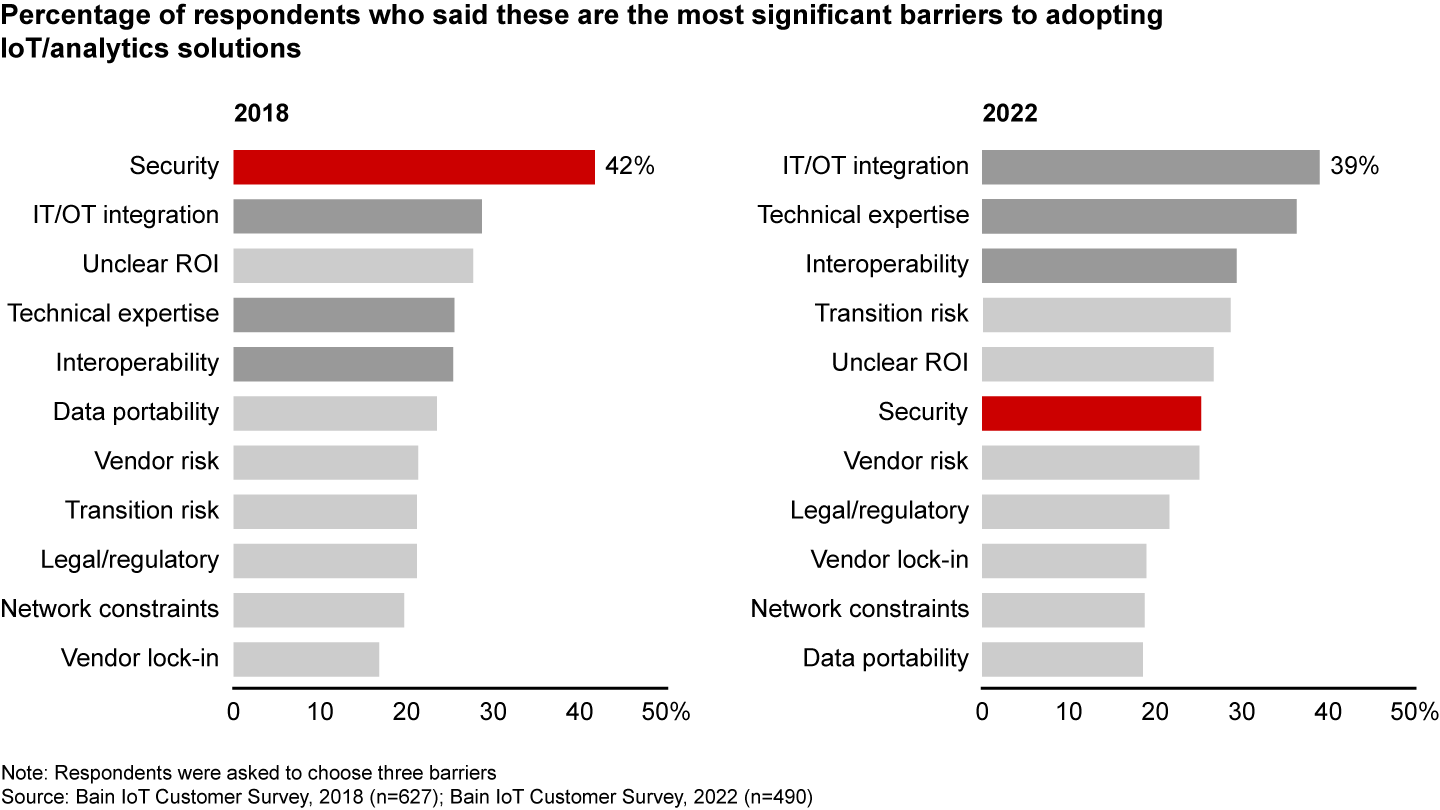
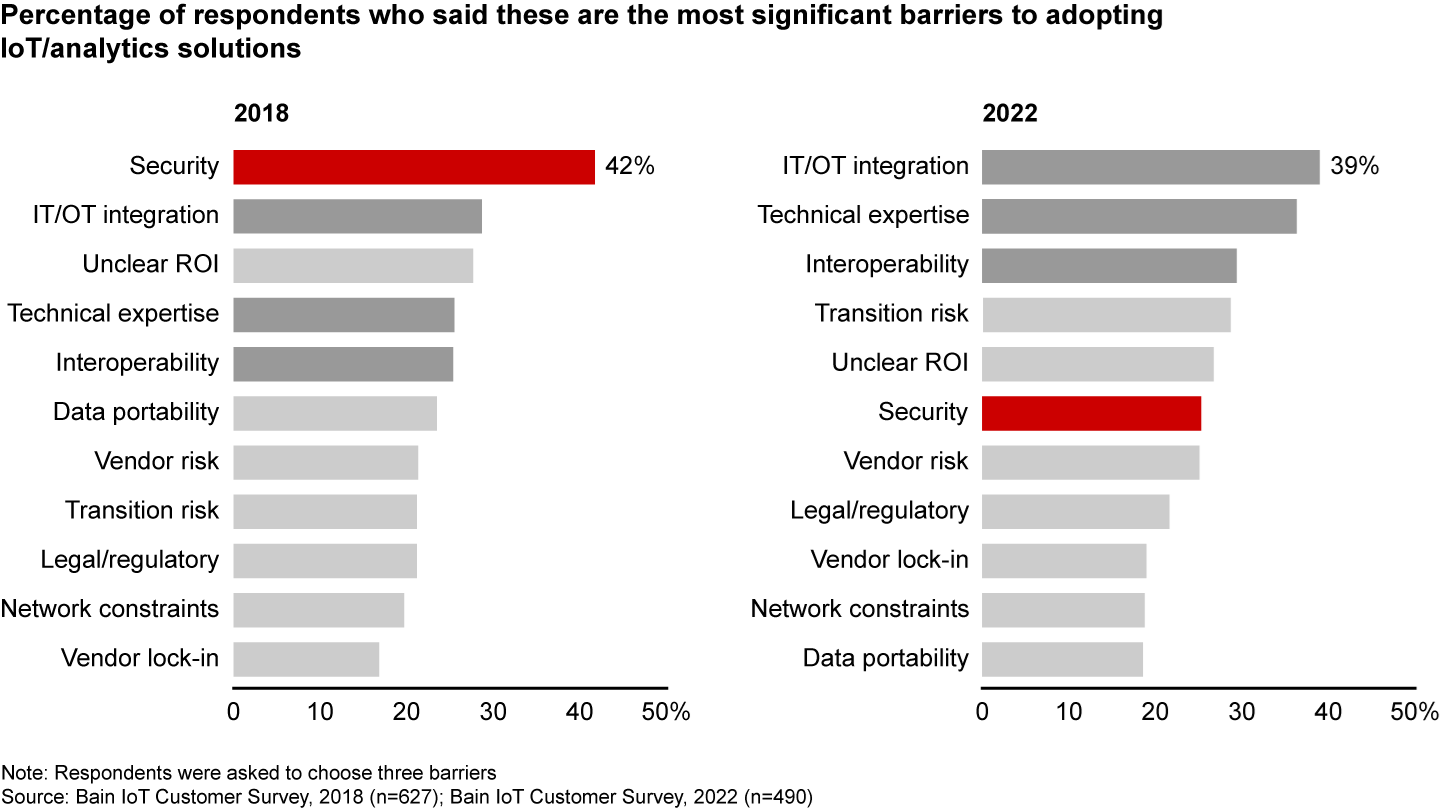
Industrial IoT initially focused on software, but today much of the low-hanging fruit―the benefits quickly garnered from adding sensors for equipment, people, and materials in the field—has been harvested. The next step, developing and realizing integrated IoT uses, is more complex. It requires the next level of intelligence, which will rely on integrating information technology and operational technology, technical expertise in areas like artificial intelligence (AI) algorithms and data science, and capacities like interoperability that become more complicated when machines become self-automated.
Making this jump requires addressing problems hardware vendors and industrial original equipment manufacturers (OEMs) know how to tackle and solve. In addition to manufacturing devices, hardware vendors have many other essential attributes, including industry expertise, feet on the street, and experience with shop floor implementation. Their field application engineers, a rare asset in the industrial IoT, can solve implementation challenges at the customer site. Using their system competence, they can help develop edge computing systems for AI inference, for example, or address such implementation challenges as unreliable networks by deploying 5G private networks or other modern connectivity technology.
Recognizing the importance of systems integration, leading hardware companies are building their capabilities. A decade ago, Krones, which provides packaging and filling lines for the food and beverage industry, began to develop industrial IoT-enabled digital solutions focused on food safety and quality and on enhancing line-operating and financial performance. Building both organically and through acquisitions, it has branched out from its hardware roots to offer software and systems integration as well. Krones’s IoT-focused Syskron division was an important contributor to its 2021 gross margin of approximately 51%, 15 percentage points higher than that of peers.
Both hardware vendors and OEMs have strong customer relationships that could benefit software, cloud application, and platform vendors, who all listed customer access as one of their top three concerns when surveyed. Many industrial OEMs and hardware vendors have go-to-market and service and support capabilities tailored to specific industries and built with years of investment. Their higher customer lifetime values and more favorable customer unit economics mean they can more easily recover such investment than software companies.
Companies that don’t have all the things IoT entails beyond software—sensors, hardware, implementation, and integration support—must either partner with companies that do or build those capabilities through acquisitions or internal development. Hilti, a builder of high-performance tools and fastening and protection devices, has used its direct-to-customer model, large field force (two-thirds of its 31,000 employees), strong brand recognition, and customer loyalty to build interest in its industrial IoT solutions, including ON!Track, one of the bigger point solutions in construction technology. Recently the company added solution consultants and integrators to expand its go-to-market and systems-integration capabilities.
Almost all IoT buyers want some sort of cloud connection, and Amazon Web Services and Microsoft Azure have invested especially heavily in programming frameworks and development platforms with predefined IoT applications. This has attracted developers that software vendors and analytics vendors want to work with (see Figure 3). In our survey, cloud service providers, software application and analytics vendors all cite device or hardware leadership as either their biggest or second-biggest shortcoming. This opens an opportunity for industrial OEMs like Siemens, Schneider, Hitachi, as well as companies like Intel and Cisco, to help them work on the toughest industrial IoT problems and, in turn, attract skilled developers with industry-specific expertise.
Cloud and analytics platforms are the most popular among developers; Amazon’s lead is significant
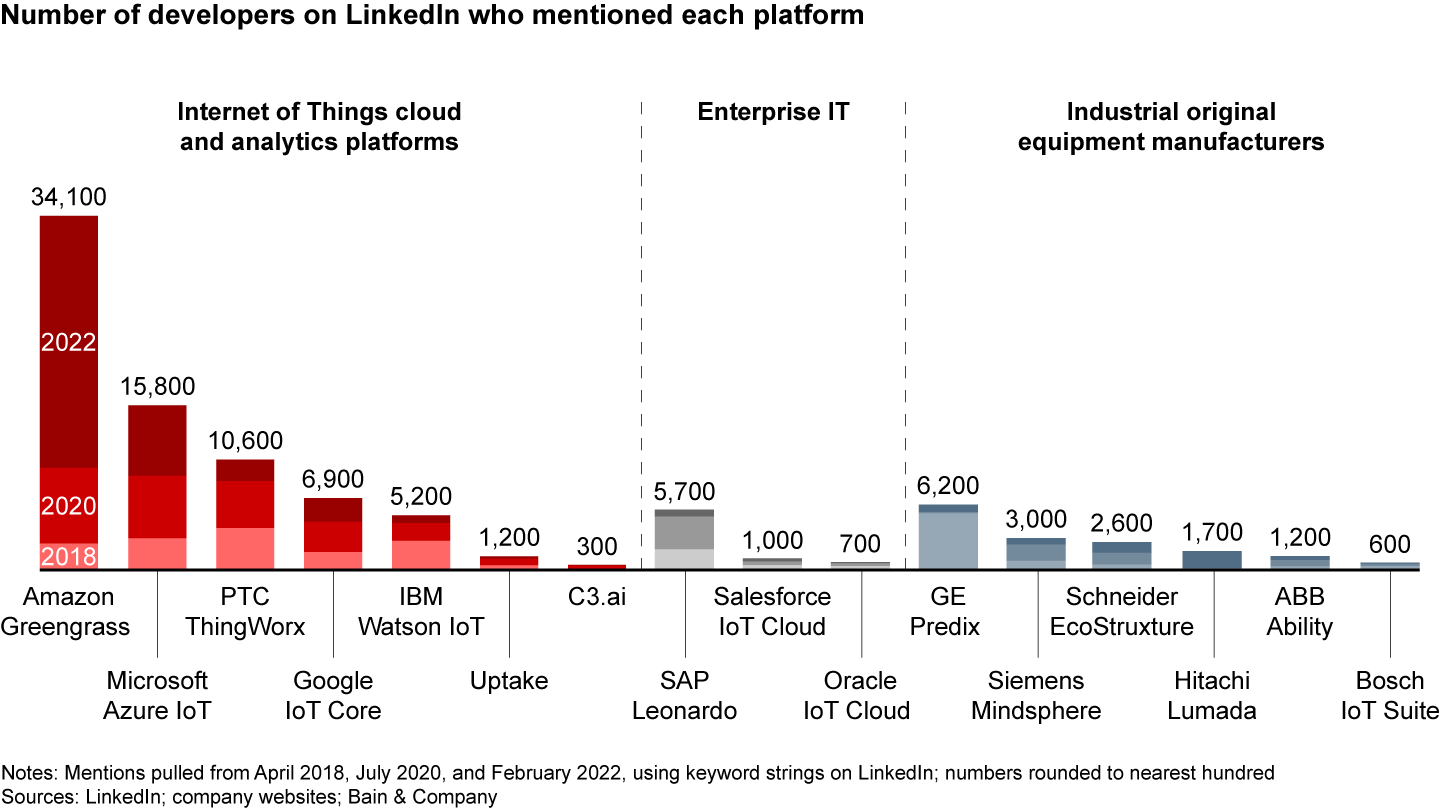
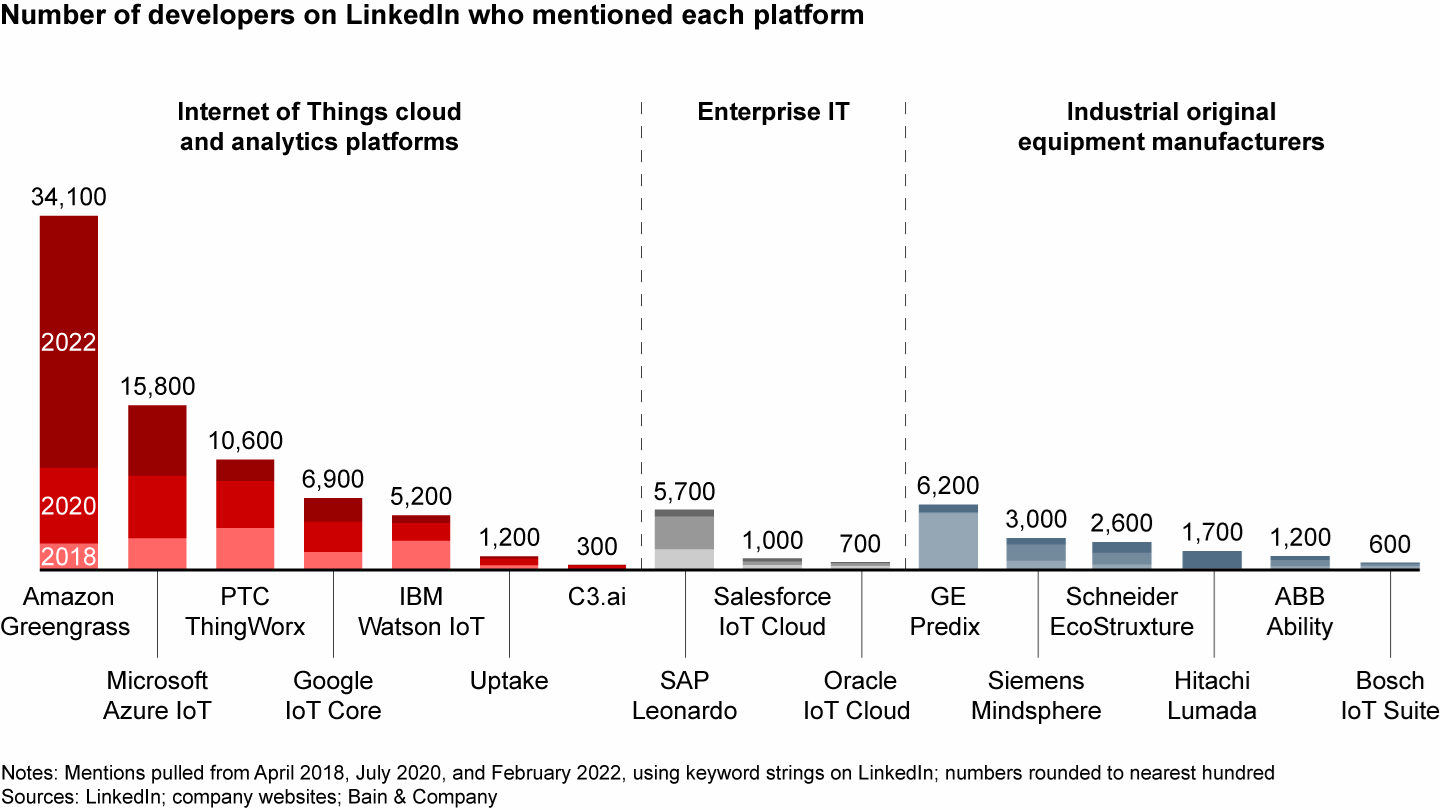
Working together will only become more important as industrial IoT solutions grow more sophisticated, requiring a combination of hardware, software, and services to deliver the expected benefits. Often, they’ll have to tie into existing infrastructure and environments. It’s a level of integration that requires domain know-how and industrial specificity. In construction, Hilti is showing how an incumbent can build an IoT-focused business. In packaging, another manufacturer has improved line performance stability by 30% and cut product defects and waste in half by using connected machines, mobility apps, and remote support to predict maintenance and spot performance deviation. Hardware companies and industrial OEMs have the industry expertise, integration experience, and partnerships to provide services and support that can take the industrial IoT from a series of successful pilot programs to something truly transformative.
Since integrating the assets and capabilities of software companies is so important, hardware vendors and OEMs building up an IoT business are smart to consider how they can partner with top software vendors and how they need to adjust their go-to-market strategy to include software in the mix. Likewise, software vendors can think about which hardware vendors could best close any gaps they have.